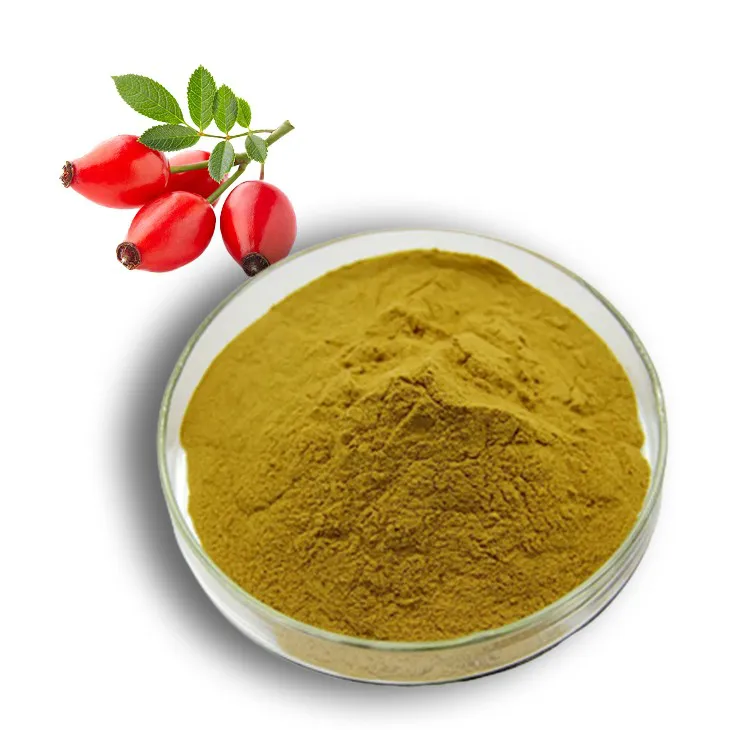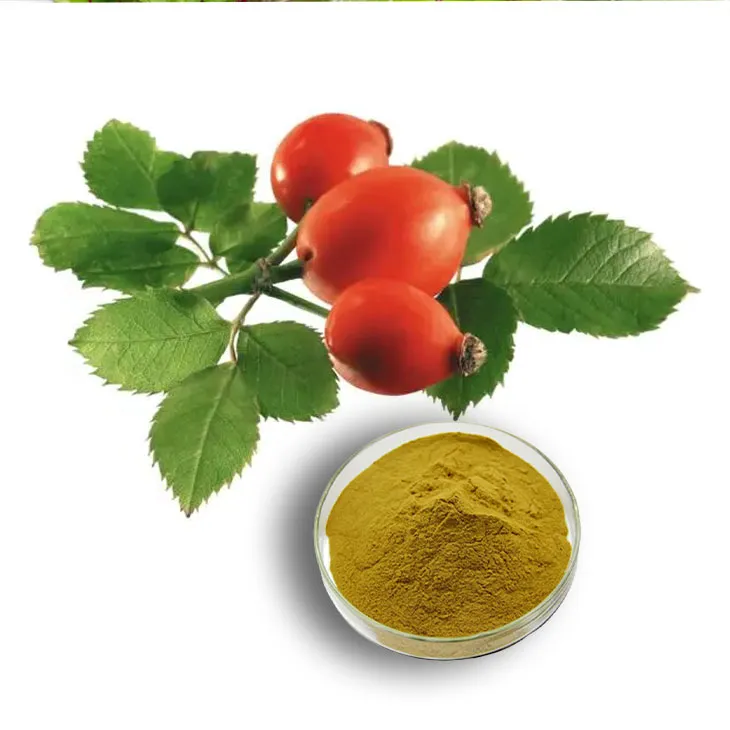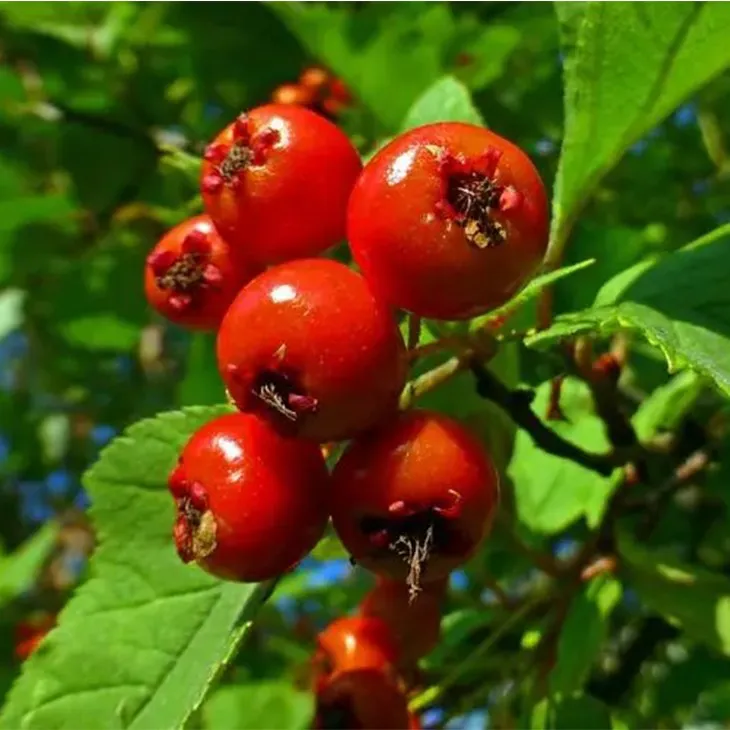- 0086-571-85302990
- sales@greenskybio.com
How to Extract Rose Hip Extract from Plants?
2024-11-29

1. Introduction
Rosehip extract is a valuable substance that has attracted much attention due to its rich nutrient content and various health - promoting properties. It contains vitamins (such as vitamin C, vitamin E), essential fatty acids, and antioxidants. These components contribute to its potential benefits for skin health, immune system support, and anti - inflammatory effects. Therefore, the extraction of rosehip extract from plants has become an important area of research and production.

2. Selection of Suitable Rosehip Plants
The first step in extracting rosehip extract is to select the appropriate rosehip plants. Not all rosehip varieties are equally suitable for extraction.
2.1. Species Consideration
There are different species of roses that produce rosehips. Rosa canina is one of the most commonly used species for extraction. It is known for its relatively high content of active components. However, other species like Rosa rugosa may also be considered depending on the specific requirements of the extract. For example, if a particular flavor or a different combination of nutrients is desired, different species might be explored.
2.2. Quality and Maturity
The quality of the rosehip plants is crucial. Plants should be healthy, free from diseases and pests. The maturity of the rosehips also plays an important role. Mature rosehips generally contain higher levels of active ingredients compared to unripe ones. The color of the rosehips can be an indicator of maturity. For instance, ripe Rosa canina rosehips are typically bright red or orange - red. They should be harvested at the right time to ensure the best quality of the extract.

3. Traditional Extraction Methods
Traditional methods of extracting rosehip extract have been used for a long time and still hold some value in certain applications.
3.1. Maceration
Maceration is a simple and traditional extraction method. It involves soaking the rosehips in a liquid, usually an oil or an alcohol - based solvent.
- First, the rosehips are carefully cleaned to remove any dirt, debris, or damaged parts.
- Then, they are placed in a container with the chosen solvent. For example, if using olive oil as a solvent, a sufficient amount of olive oil is added to completely cover the rosehips.
- The container is then sealed and left to stand for a period of time, which can range from several days to a few weeks. During this time, the active components in the rosehips gradually dissolve into the solvent.
- After the maceration period, the mixture is filtered to separate the liquid extract (containing the dissolved active components) from the solid rosehip residue.
3.2. Infusion
Infusion is another traditional method, which is somewhat similar to maceration but usually involves a shorter extraction time and a milder solvent, often water.
- Clean the rosehips thoroughly.
- Place the rosehips in a pot or a container with water. The ratio of rosehips to water can vary depending on the desired concentration of the extract, but a common ratio could be 1:5 (one part rosehips to five parts water).
- Heat the water - rosehip mixture gently. It is important not to boil the mixture vigorously as this may damage some of the heat - sensitive active components. A slow simmer is usually sufficient.
- Allow the mixture to infuse for a period of time, typically around 1 - 2 hours.
- Finally, strain the mixture to obtain the infusion extract.

4. Modern Extraction Methods
Modern extraction methods offer more efficiency, better control over the extraction process, and often result in higher - quality extracts.
4.1. Solvent Extraction
Solvent extraction is a widely used modern method. It involves using appropriate solvents to dissolve the active components in rosehips.
- Solvent Selection
- Common solvents used include ethanol, methanol, and hexane. Ethanol is a popular choice as it is relatively safe, can dissolve a wide range of active components, and is easy to remove from the final extract. Methanol is also effective but requires more careful handling due to its toxicity.
- The choice of solvent depends on the nature of the active components to be extracted. For example, if the target is to extract fatty acids, a non - polar solvent like hexane may be more suitable, while for water - soluble vitamins and antioxidants, a polar solvent such as ethanol is often preferred.
- Extraction Process
- The rosehips are first dried and ground into a fine powder. This increases the surface area available for extraction, which speeds up the process.
- The powdered rosehips are then placed in a Soxhlet extractor or a similar extraction apparatus. The solvent is added and the extraction is carried out at a specific temperature and for a certain period of time. For example, when using ethanol as a solvent, the extraction may be carried out at around 50 - 70°C for 2 - 6 hours.
- After the extraction, the solvent - containing extract is separated from the solid residue. This can be done through filtration or centrifugation.
- Solvent Removal
- The solvent needs to be removed from the extract to obtain the pure rosehip extract. This can be achieved through evaporation. The solvent - extract mixture is heated under reduced pressure in a rotary evaporator. The reduced pressure helps to lower the boiling point of the solvent, allowing it to be removed more easily without damaging the active components.
4.2. Steam Distillation
Steam distillation is another modern extraction method, although it has different characteristics compared to solvent extraction.
- The rosehips are placed in a distillation apparatus. Steam is then passed through the rosehips.
- The steam causes the volatile components in the rosehips to vaporize. These vaporized components, along with the steam, are then condensed.
- The condensed liquid is then separated into an aqueous phase and an oil phase (if applicable). The oil phase may contain some of the essential oils and other volatile components of the rosehips, which can be further processed or used as part of the rosehip extract.
- One advantage of steam distillation is that it can produce extracts with a distinct aroma due to the presence of volatile components. However, it may not be as effective for extracting non - volatile components such as some of the antioxidants and fatty acids compared to solvent extraction.
5. Purification and Quality Control
During the extraction process, purification and quality control are of utmost importance to ensure the safety and efficacy of the final product.
5.1. Purification
After the initial extraction, the extract may contain impurities such as residual solvents, plant debris, and other unwanted substances.
- Filtration and Centrifugation
- Filtration through fine filters can remove larger particles such as plant debris. Different pore - sized filters can be used depending on the size of the particles to be removed. For example, a filter with a pore size of 0.45 µm can be used to remove most of the visible particles.
- Centrifugation can be used to separate heavier particles from the extract. By spinning the extract at a high speed in a centrifuge, the denser particles will sediment at the bottom, allowing the cleaner extract to be separated.
- Chromatographic Purification
- Chromatography techniques such as column chromatography or high - performance liquid chromatography (HPLC) can be used for more precise purification. In column chromatography, the extract is passed through a column filled with a stationary phase. Different components in the extract will interact differently with the stationary phase, allowing them to be separated based on their chemical properties.
- HPLC is a more advanced chromatographic technique that can provide very high - resolution separation. It is often used to purify and analyze the individual components in the rosehip extract.
5.2. Quality Control
Quality control measures are necessary to ensure that the rosehip extract meets the required standards.
- Analysis of Active Components
- Methods such as spectrophotometry can be used to determine the content of vitamins and antioxidants in the extract. For example, the content of vitamin C can be measured by its absorption at a specific wavelength. This helps to ensure that the extract contains the expected amount of beneficial components.
- Gas chromatography - mass spectrometry (GC - MS) or liquid chromatography - mass spectrometry (LC - MS) can be used to analyze the fatty acids and other volatile components in the extract. These techniques can identify and quantify the different components accurately.
- Testing for Purity and Safety
- Tests for residual solvents are essential. The amount of residual solvents in the extract should be within the acceptable limits set by regulatory authorities. For example, in the case of ethanol - based extracts, the residual ethanol content should be low enough to ensure the safety of the product.
- Microbiological testing should also be carried out to check for the presence of harmful bacteria, fungi, or other microorganisms. This is especially important for extracts that are used in food, cosmetic, or pharmaceutical applications.
6. Conclusion
The extraction of rosehip extract from plants involves a series of steps starting from the selection of suitable plants, followed by different extraction methods, and finally purification and quality control. Each step is crucial in obtaining a high - quality, safe, and effective rosehip extract. With the development of modern extraction and purification techniques, it is possible to produce rosehip extracts with more consistent quality and higher levels of active components, which can be used in various industries such as food, cosmetics, and pharmaceuticals.
FAQ:
What are the suitable rosehip plants for extraction?
When selecting rosehip plants for extraction, it is important to consider several factors. Generally, Rosa canina is a commonly used species. It should be healthy, fully ripe, and free from diseases and pests. The quality of the rosehips from these plants can significantly affect the properties of the final extract.
What is solvent extraction in rosehip extract?
Solvent extraction in the context of rosehip extract involves using solvents such as ethanol or ethyl acetate. These solvents are able to dissolve the active components present in the rosehips, like vitamins, antioxidants, and fatty acids. The rosehip material is typically soaked in the solvent for a period of time, and then the solvent is separated from the solid residue, carrying with it the dissolved components. This method is effective in obtaining a concentrated extract rich in the desired substances.
How does steam distillation work for rosehip extraction?
Steam distillation for rosehip extraction works by passing steam through the rosehip material. The heat from the steam causes the volatile compounds in the rosehips to vaporize. These vapors are then condensed back into a liquid form. However, compared to solvent extraction, steam distillation is more suitable for extracting volatile components rather than non - volatile substances like some of the antioxidants and fatty acids present in rosehips. It is a different approach that can yield a distinct type of extract with its own set of properties.
Why is purification important during rosehip extract extraction?
Purification is crucial during the rosehip extract extraction process. It helps to remove impurities such as plant debris, unwanted chemicals, and residual solvents. Impurities can affect the quality, safety, and efficacy of the final extract. By purifying the extract, we can ensure that it contains only the desired active components in the appropriate concentrations, making it suitable for various applications such as in the cosmetic, food, or pharmaceutical industries.
How is quality control carried out in rosehip extract production?
Quality control in rosehip extract production involves multiple steps. Firstly, the raw materials (rosehips) are inspected for quality, including factors like ripeness and purity. During the extraction process, parameters such as temperature, extraction time, and solvent concentration (if using solvent extraction) are carefully monitored. After extraction, the final product is tested for its chemical composition, including the levels of active ingredients, as well as for contaminants. This ensures that the rosehip extract meets the required standards for safety and efficacy.
Related literature
- Extraction Techniques for Rosehip: A Comprehensive Review"
- "Optimizing the Extraction of Bioactive Compounds from Rosehip"
- "Rosehip Extract: From Plant to Product - Quality Assurance"
- ▶ Hesperidin
- ▶ Citrus Bioflavonoids
- ▶ Plant Extract
- ▶ lycopene
- ▶ Diosmin
- ▶ Grape seed extract
- ▶ Sea buckthorn Juice Powder
- ▶ Fruit Juice Powder
- ▶ Hops Extract
- ▶ Artichoke Extract
- ▶ Mushroom extract
- ▶ Astaxanthin
- ▶ Green Tea Extract
- ▶ Curcumin
- ▶ Horse Chestnut Extract
- ▶ Other Product
- ▶ Boswellia Serrata Extract
- ▶ Resveratrol
- ▶ Marigold Extract
- ▶ Grape Leaf Extract
- ▶ New Product
- ▶ Aminolevulinic acid
- ▶ Cranberry Extract
- ▶ Red Yeast Rice
- ▶ Red Wine Extract
-
Marigold Extract
2024-11-29
-
Buckthorn bark extract
2024-11-29
-
Apricot Powder
2024-11-29
-
Okra Extract
2024-11-29
-
Nettle Root Extract
2024-11-29
-
Sugarcane Extract
2024-11-29
-
Pomegranate Extract
2024-11-29
-
Rose Hip Extract
2024-11-29
-
Beta Carotene
2024-11-29
-
Hawthorn Extract
2024-11-29




















